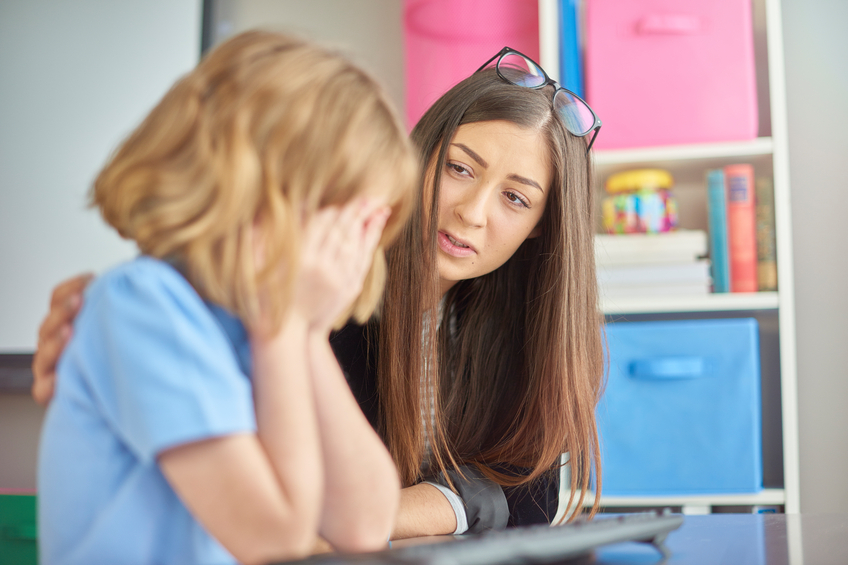All children experience anxiousness in differing degrees throughout their childhood. One child may have fleeting feelings of uneasiness about their surroundings or task while another child may be gripped with prolonged symptoms or thoughts that have a detrimental impact on everyday life. Recognising when a child is suffering from an anxiety disorder and gaining treatment can improve their quality of life now and in the future.

What is childhood anxiety?
Anxiety is a feeling of fear or imminent threat. Anxieties can be triggered by a range of situations including the environment, stressful situations like tests, family problems or trauma. There may be physical and mental health problems related to anxiety.
Children can suffer from a range of symptoms related to anxiety including a dry mouth, nightmares, sleep difficulties, concentration problems, headaches, rapid heartbeat, sweating, diarrohea and the flare up of another health problem.
Prevalence of childhood anxiety
The Mental Health of Children and Adolescents: Report on the Second Australian Child and Adolescent Survey of Mental Health and Wellbeing published in 2015 by the Australian Government Department of Health surveyed 6,300 households with children and/or adolescents aged 4 to 17 years. Of those surveyed it was reported that anxiety disorders (6.9%) was the second most common mental disorder after ADHD (7.4%). It was estimated that in the last 12 months, 278,000 Australian children and adolescents had had an anxiety disorder. Just over half (58.7%) of these had a mild anxiety disorder.
What schools can do
The Report on the Second Australian Child and Adolescent Survey of Mental Health and Wellbeing revealed that schools are important for recognising symptoms and providing services to children with a mental disorder. A school staff member suggested help for children in 40% of respondents needing help for emotional or behavioural problems.
Of the 40% of children who accessed services through schools, 28% received individual counselling, 9% attended a group counselling or support program, 13% used a special class or school, 5% saw a school nurse and 17% had received other school services.
Teachers are important in recognising a student who is suffering an anxiety disorder. They can work with parents and other school staff including the nurse or psychologist to ensure a student receives the services they require both within and outside the school environment.
What parents can do
A child or even an adolescent may not be able to communicate that they are suffering from anxiety. Children may describe symptoms of anxiety to a parent or they may not say anything to their family. A child can be embarrassed or simply not realise that their symptoms aren’t a standard part of growing up. Parents can assist their child by knowing the symptoms and observing their child in situations that may be stressful to their child. Parents can be vigilant to anxiety by remembering to regularly ask their child if everything is ok or if they feel unwell.
Parents can ask their child’s teacher, a friend’s parent or sports coach if their child seems anxious in situations that are often more stressful than the home environment. If a parent suspects their child has an anxiety disorder they can visit their GP or psychologist for further investigation.
Benefits of seeking help
Rather than labelling a child as ‘just shy’ or having a ‘nervous personality’’, seeking more information from other carers and professionals ensures a child receives the correct diagnosis and any required treatment. The physical and mental health of a child with prolonged anxiety can be compromised. If left unchecked a mild childhood anxiety disorder has the potential to become more severe and difficult to treat in adolescence and then adulthood.